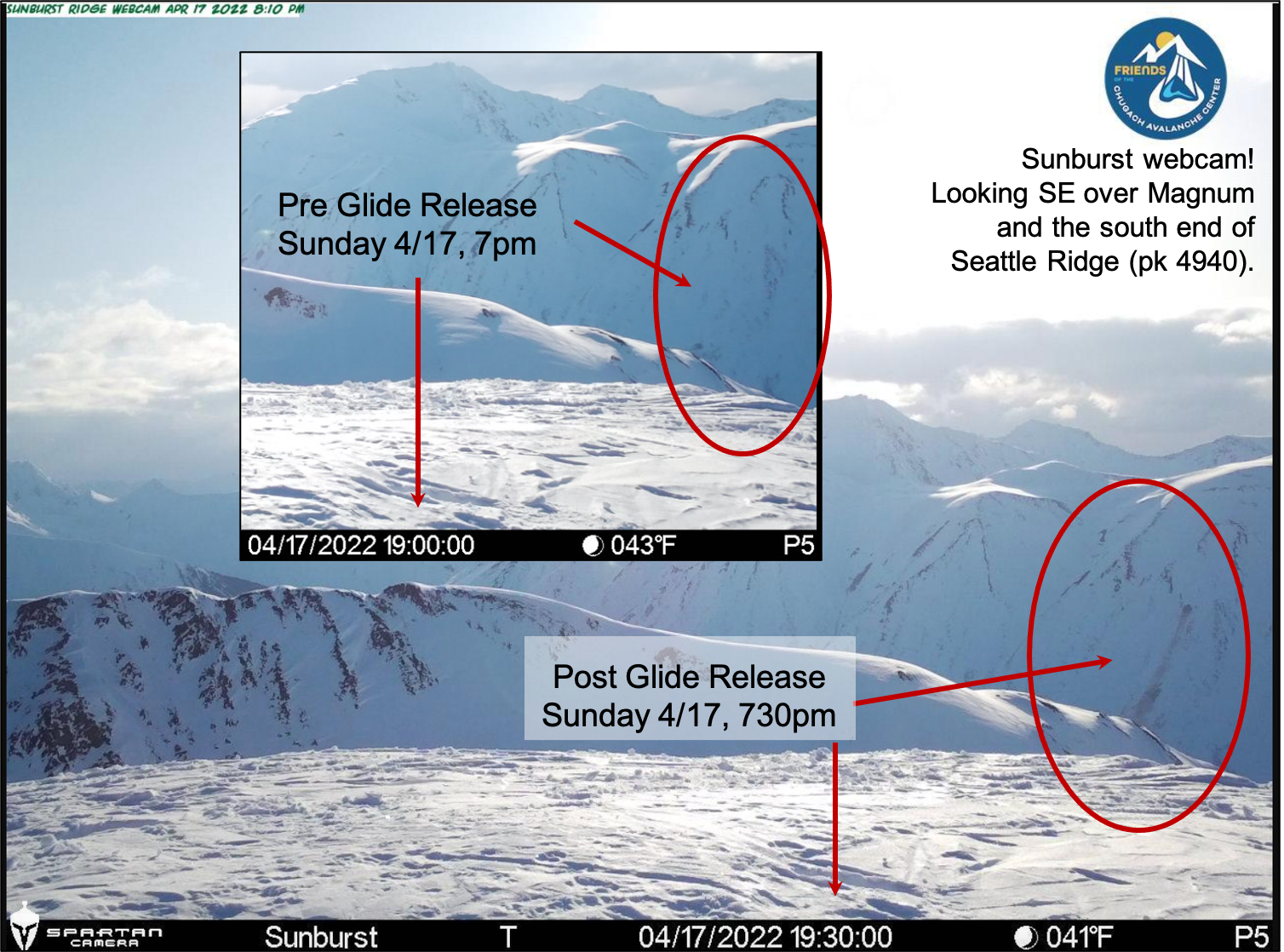Turnagain Pass
|
|
A LOW avalanche danger remains over the region. Although it will be unlikely a person will trigger an avalanche, there are still concerns to be aware of. Cornices are very large and can be triggered by people along ridgelines. If the sun heats up the solar aspects enough this afternoon/evening, wet loose avalanches may be triggered. Glide cracks are releasing into avalanches, avoid time under cracks and avoid areas where glide avalanches are occurring regularly such as under Seattle Ridge.
WEDNESDAY AVALANCHE OUTLOOK: There will be no forecast issued tomorrow, Wednesday. The next forecast will be on Thursday, April 21st at 7am. Avalanche conditions will be similar to today and the danger will remain generally LOW. Watch for late afternoon surface heating on sun-baked slopes. Wet loose avalanches could be seen or triggered during the afternoon/evening.
- NEW Sunburst Webcam! If you have not seen the images yet, they are on the sunburst weather station page – at the bottom. Thank you to all the members and donators that made this possible through the Friend of the Chugach Avalanche Center!
- End of Season Operations: Forecasts will be issued on Tuesday, Thursday, Saturday and Sunday through the end of April. If a dramatic change in avalanche conditions occurs on an off day, we will provide a forecast. The final forecast will be on Saturday, April 30th.

 Extremely large cornices overhang the Byron Glacier Valley. If one of these is to fall, it will run over the famous ‘ice caves’ that are essentially formed by avalanche debris that does not completely melt during the summer. It is prudent to avoid this area until the snow has already avalanched. Photo taken Sunday, 4.17.22.
Extremely large cornices overhang the Byron Glacier Valley. If one of these is to fall, it will run over the famous ‘ice caves’ that are essentially formed by avalanche debris that does not completely melt during the summer. It is prudent to avoid this area until the snow has already avalanched. Photo taken Sunday, 4.17.22.  Glide avalanche that pulled out a ‘slab’ of snow on the way down. This is on the road side of Seattle Ridge and occurred Sunday. Photo by Andy Moderow, 4.17.22.
Glide avalanche that pulled out a ‘slab’ of snow on the way down. This is on the road side of Seattle Ridge and occurred Sunday. Photo by Andy Moderow, 4.17.22. Glide release seen on the new Sunburst webcam.
Glide release seen on the new Sunburst webcam. Forecaster John Sykes and Intern Allen Dahl installed the camera provided by the Friends group last week. Thanks everyone – awesome seeing the sunrise on Peak 4940!
Forecaster John Sykes and Intern Allen Dahl installed the camera provided by the Friends group last week. Thanks everyone – awesome seeing the sunrise on Peak 4940!